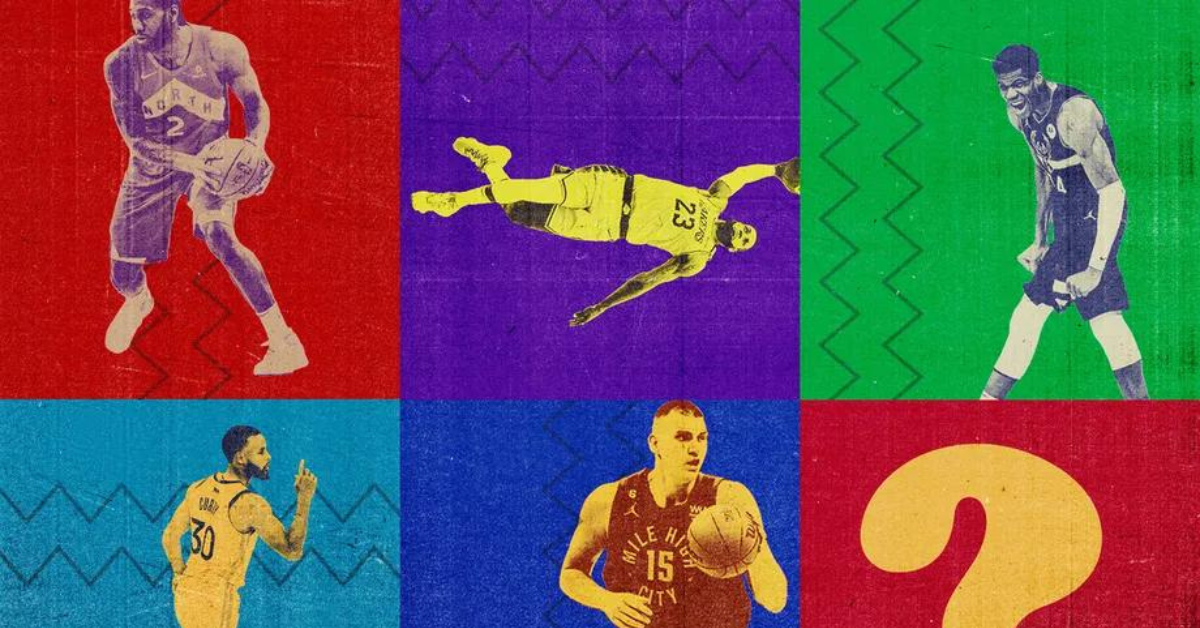The NBA, known for its rich history of dynasties and dominant teams, is experiencing a unique era of parity and unpredictability in the 2020s. With five different champions in the past five years and no clear defining team emerging at the start of the decade, questions arise about the future of dynasties in professional basketball.
A Historical Perspective
Throughout NBA history, certain decades have been defined by dominant teams that captured multiple championships, creating lasting legacies. The Mikan Dynasty, Russell Dynasty, Magic vs. Bird rivalry, and the Jordan Dynasty are just a few examples of eras marked by sustained excellence from specific franchises.
In contrast, the 1970s stood out as an anomaly with no obvious defining team, similar to the current landscape of the NBA in the 2020s. This period of parity in the ’70s was influenced by the league’s merger with the ABA, which infused the NBA with an influx of new talent, leading to increased competition and unpredictability.
The Current State of the NBA
The absence of a dominant team in the early 2020s reflects the NBA’s evolving landscape, characterized by concentrated talent and heightened competitiveness. The league’s talent pool has expanded with the inclusion of more international stars, yet the absence of recent expansion teams has resulted in a clustering of talent among existing franchises.
Expansion to 32 teams is anticipated in the near future, which could potentially reshape the competitive dynamics of the league. However, for now, the absence of a central power around which the NBA’s competitive landscape revolves has created a wide-open race for the championship.
Recent Champions and Their Impact
Recent NBA champions, including the Toronto Raptors, Los Angeles Lakers, Milwaukee Bucks, Golden State Warriors, and Denver Nuggets, have each had their moment in the spotlight but have failed to establish prolonged dominance in the 2020s. Factors such as player injuries, roster turnover, and competitive balance within the league have contributed to this trend.
The departure of key players, such as Kawhi Leonard from the Raptors, has also disrupted potential dynasties, highlighting the challenges of sustaining success in a league characterized by roster volatility and evolving player dynamics.
The Rise of the Denver Nuggets
Amidst this era of parity, the Denver Nuggets have emerged as a potential contender for sustained success. Led by superstar Nikola Jokic and supported by a talented core including Michael Porter Jr., Jamal Murray, and Aaron Gordon, the Nuggets possess the foundation for a competitive team in the years ahead.
The Nuggets’ recent championship victory in 2023 and their impressive playoff performance underscore their potential to establish themselves as a dominant force in the league. However, the team faces challenges, including injury concerns and roster optimization, that could impact their ability to build a dynasty.
The Role of Injuries and Roster Management
Injuries have been a significant factor affecting the NBA’s landscape, with players like Jamal Murray and Michael Porter Jr. facing extended absences due to health issues. The impact of injuries on team success highlights the importance of roster depth and resilience in navigating the rigors of the NBA season.
Additionally, new rules implemented in the NBA’s collective bargaining agreement aimed at preventing superteams have added complexity to roster construction and management. Franchises must navigate salary cap restrictions and prioritize sustainability when building competitive rosters.
Looking Ahead: The Quest for Dynasty
As the NBA continues to evolve, the quest for dynasty remains a compelling storyline. The Denver Nuggets, with their talented core and championship aspirations, symbolize the potential for sustained success in a league defined by parity.
However, challenges loom on the horizon, including the rise of emerging contenders and the unpredictability of injuries. The future of dynasties in the NBA hinges on a delicate balance of talent acquisition, roster management, and resilience in the face of adversity.
In conclusion, the NBA’s era of parity reflects a shifting landscape where traditional notions of dominance are challenged by competitive balance and evolving player dynamics. As the league progresses into the 2020s and beyond, the quest for sustained success will continue to shape the narrative of professional basketball, showcasing the enduring pursuit of greatness in a dynamic and ever-changing sport.















